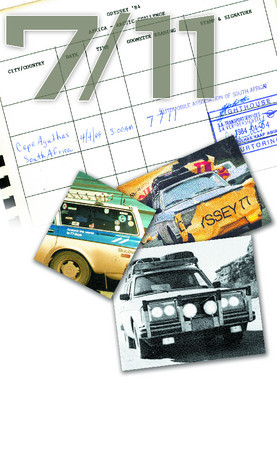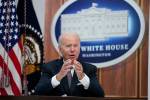Sevens and 11s haunt Sowerby’s travels
I've had an ongoing relationship with sevens and 11s for a long time.
In 1977, when Ken Langley and I decided to quit our cushy jobs to take a stab at breaking the existing 103-day record for around-the-world driving, we figured we should eclipse Phileas Fogg's fictional 80-day jaunt while we were at it. So we set 77 days, or seven 11s, as our target. We pulled together a game plan and methodically went about flogging the idea to governments, automobile associations and corporations.
After two years of beating the sponsorship bushes, it all came down to yet another presentation to Volvo. The make-or-break meeting had gone well, but we would have to hold our breath for another few days before the final decision was made.
A "no" would send us on our way as well, but back home where friends and shareholders would regard us as fools for having spent two years of our lives pursuing such a frivolous idea. Pride was on the line.
Leaving Volvo's headquarters, Ken pointed to a big Toshiba digital clock on the side of the highway.
"We'll be all right," he mused. "Look at the time. It's 11:11!"
The next morning Volvo called. They were on, with a new Volvo 245 station-wagon and a fistful of cash to offset some of the expenses. To this day, whenever I see a digital clock at 11:11, I think of that Toshiba clock and wait for something good to happen.
We were successful on that around-the-world trek, slicing more than a month off the existing record when we rolled back to our start point in 74 days, 1 hour and 11 minutes. We had broken the windshield in seven places on the 26,514-mile drive.
A few months later, I was at my desk pondering the financial predicament our global junket had steered us into. Out of the blue, I calculated the numbers of hours and minutes it had taken us to amass such a debt. The result, 1,777 hours and 11 minutes. Oh, oh!
At the end of the year I asked our accountant, who was fathering us through the world of high finance, how things looked.
"You had a big loss but, considering all the currencies you were dealing with, everything almost balanced," He said. "It was $77 out."
Three years later, Ken and I had convinced General Motors Corp. to support our bid to establish a new speed record for the drive from the bottom of Africa to the top of Europe.
One Friday afternoon, before heading off on research trips to Africa, we made a snap decision to move our operation to a city 1,200 miles away. By midnight, we had our dream business packed into the back of Ken's brother's black five-year-old Chevy pickup. We covered the hodge-podge of filing cabinets, typewriters and credenzas with an orange tarp and headed east.
Out on the highway a storm was brewing, but aside from a lack of dash lights, the truck felt like it was up for the load as we settled in for an all-nighter. With the new project on the rails, there would be lots to talk about.
I was wondering how fast I was driving when a flash of lightening lit up the inside of the cab. I fixated on the instrument cluster.
"Looks like we'll be OK," I told Ken. "Odometer's reading 77,777."
We spent the next six months preparing for our road assault on Africa. Then we drove our burly 1984 GMC Suburban 2500 to New York, put it into a container and shipped it to Port Elizabeth, South Africa. The truck was stuffed with tools, spare parts, food and a heap of documents that would hopefully smooth the bureaucratic ruts along our route through Africa and the Middle East.
A few weeks later, Ken and I picked up the truck in Port Elizabeth and drove to Cape Agulhas, a barren jut of rock at the most southern point of the African continent. We grabbed a few hours sleep before a crew from the Automobile Association of South Africa woke us. It was 3 a.m.
Ken maneuvered the truck to the end of the road. Nothing but water stood between Antarctica and us. To the north, the African continent, a sidebar through Saudi Arabia, Kuwait and Iraq, the East Bloc then Europe to the finish line.
We tossed a gold Krugerand coin to see who would drive first. Ken won, so while he settled in behind the wheel for our official launch, I fished out the log books.
"What's the odometer reading?" I wanted to get everything right.
"You're not going to believe this," Ken laughed.
"It's 7,711."
And 28 days, 13 hours and 10 minutes later, I horsed the trusty Suburban into Nordcap, Norway, and secured our second long-distance world driving record. The nine bullet holes from an ambush in northern Kenya? That's another story.
Garry Sowerby, author of "Sowerby's Road: Adventures of a Driven Mind," is a four-time Guinness World Record holder for long-distance driving. His exploits, good, bad and just plain harrowing, are the subject of World Odyssey, produced in conjunction with Wheelbase Communications. Wheelbase is a worldwide provider of automotive news and features stories.





















